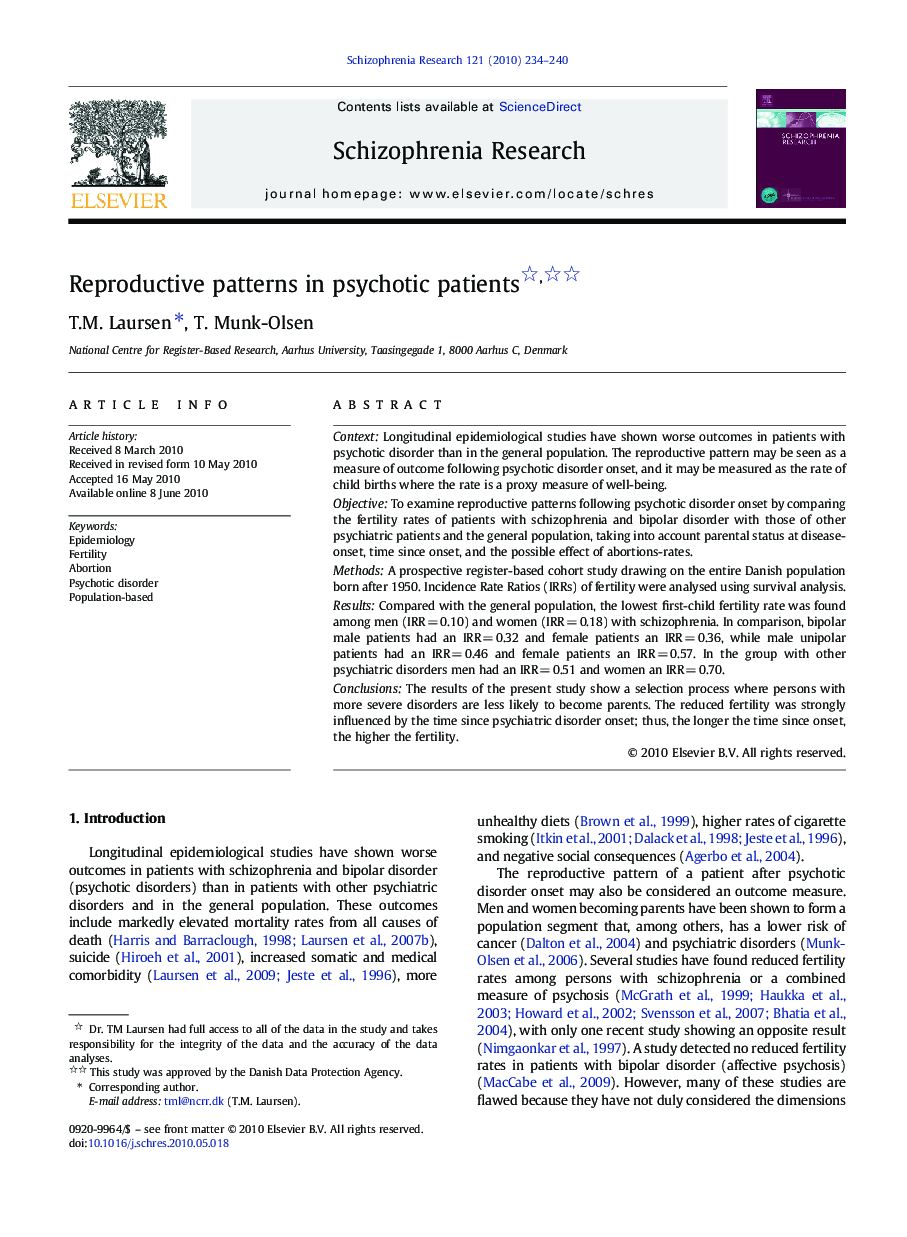| کد مقاله | کد نشریه | سال انتشار | مقاله انگلیسی | نسخه تمام متن |
|---|---|---|---|---|
| 338490 | 547954 | 2010 | 7 صفحه PDF | دانلود رایگان |

ContextLongitudinal epidemiological studies have shown worse outcomes in patients with psychotic disorder than in the general population. The reproductive pattern may be seen as a measure of outcome following psychotic disorder onset, and it may be measured as the rate of child births where the rate is a proxy measure of well-being.ObjectiveTo examine reproductive patterns following psychotic disorder onset by comparing the fertility rates of patients with schizophrenia and bipolar disorder with those of other psychiatric patients and the general population, taking into account parental status at disease-onset, time since onset, and the possible effect of abortions-rates.MethodsA prospective register-based cohort study drawing on the entire Danish population born after 1950. Incidence Rate Ratios (IRRs) of fertility were analysed using survival analysis.ResultsCompared with the general population, the lowest first-child fertility rate was found among men (IRR = 0.10) and women (IRR = 0.18) with schizophrenia. In comparison, bipolar male patients had an IRR = 0.32 and female patients an IRR = 0.36, while male unipolar patients had an IRR = 0.46 and female patients an IRR = 0.57. In the group with other psychiatric disorders men had an IRR = 0.51 and women an IRR = 0.70.ConclusionsThe results of the present study show a selection process where persons with more severe disorders are less likely to become parents. The reduced fertility was strongly influenced by the time since psychiatric disorder onset; thus, the longer the time since onset, the higher the fertility.
Journal: Schizophrenia Research - Volume 121, Issues 1–3, August 2010, Pages 234–240